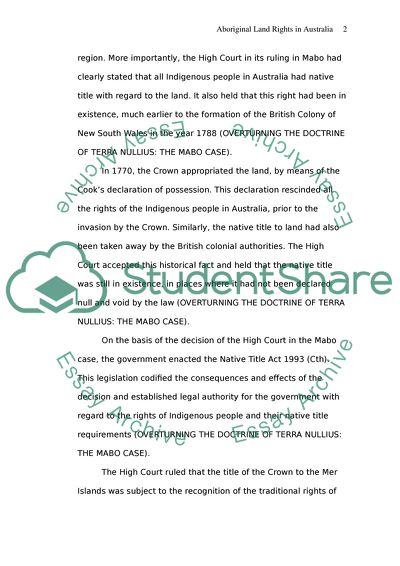Cite this document
(Mabo and Aboriginal Land Rights Issues in Australia Essay, n.d.)
Mabo and Aboriginal Land Rights Issues in Australia Essay. Retrieved from https://studentshare.org/social-science/1715413-how-effective-have-the-steps-taken-since-the-decision-in-mabo-been-in-addressing-aboriginal-land-rights-issues-in-australia
Mabo and Aboriginal Land Rights Issues in Australia Essay. Retrieved from https://studentshare.org/social-science/1715413-how-effective-have-the-steps-taken-since-the-decision-in-mabo-been-in-addressing-aboriginal-land-rights-issues-in-australia
(Mabo and Aboriginal Land Rights Issues in Australia Essay)
Mabo and Aboriginal Land Rights Issues in Australia Essay. https://studentshare.org/social-science/1715413-how-effective-have-the-steps-taken-since-the-decision-in-mabo-been-in-addressing-aboriginal-land-rights-issues-in-australia.
Mabo and Aboriginal Land Rights Issues in Australia Essay. https://studentshare.org/social-science/1715413-how-effective-have-the-steps-taken-since-the-decision-in-mabo-been-in-addressing-aboriginal-land-rights-issues-in-australia.
“Mabo and Aboriginal Land Rights Issues in Australia Essay”, n.d. https://studentshare.org/social-science/1715413-how-effective-have-the-steps-taken-since-the-decision-in-mabo-been-in-addressing-aboriginal-land-rights-issues-in-australia.


